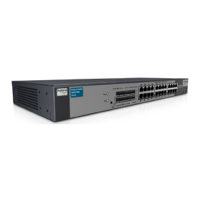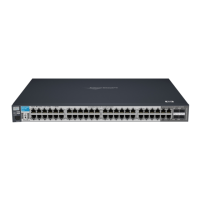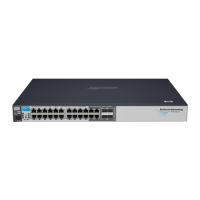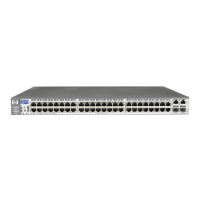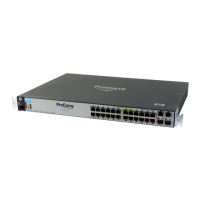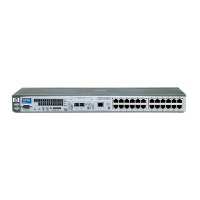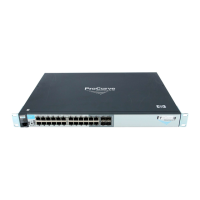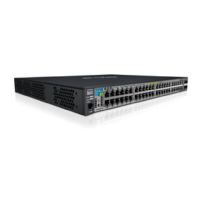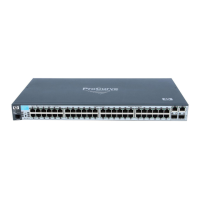2-21
Installing the Switch
Installation Procedures
Installing the Switch
The following picture demonstrates and example of connectivity between an
EPS/RPS device and a Switch device.
EPS/RPS Operation
The EPS/RPS monitors the power signal from the switch by detecting that the
EPS/RPS is connected to a switch with an EPS/RPS cable. When the power
from the switch is no longer detected, the EPS/RPS will turn on and provide
power to the switch within 1ms.
The EPS/RPS supports hot plugging of the EPS/RPS cable without causing a
reboot of the switch or causing the power supply in either the EPS/RPS or
switch to shut down temporarily or permanently. For more information refer
to the documentation that came with the EPS/RPS.
Device Connected
Power Status
R1 R2 R3 R4 R5 R6 E1
Device
Connected
Pow er
Status
E2
RPS 1 RPS 2 RPS 3 RPS 4 RPS 5 RPS 6 EPS 1 EPS 2
EPS Power: 50V 370W total for PoE applications. Power is shared when both ports are used.
RPS Power: 12V backup to one connected device. Lowest-numbered port has priority.
Line: 50/60 Hz.
100-240 V~ 9.1A (9,1A)
HP ProCurve RPS Input
Line: 50/60 Hz.
100-127 V~ 0.6A (0,6A)
200-240 V~ 0.3A (0,3A)
Console
Switch 2848, RPS input port
RPS output port
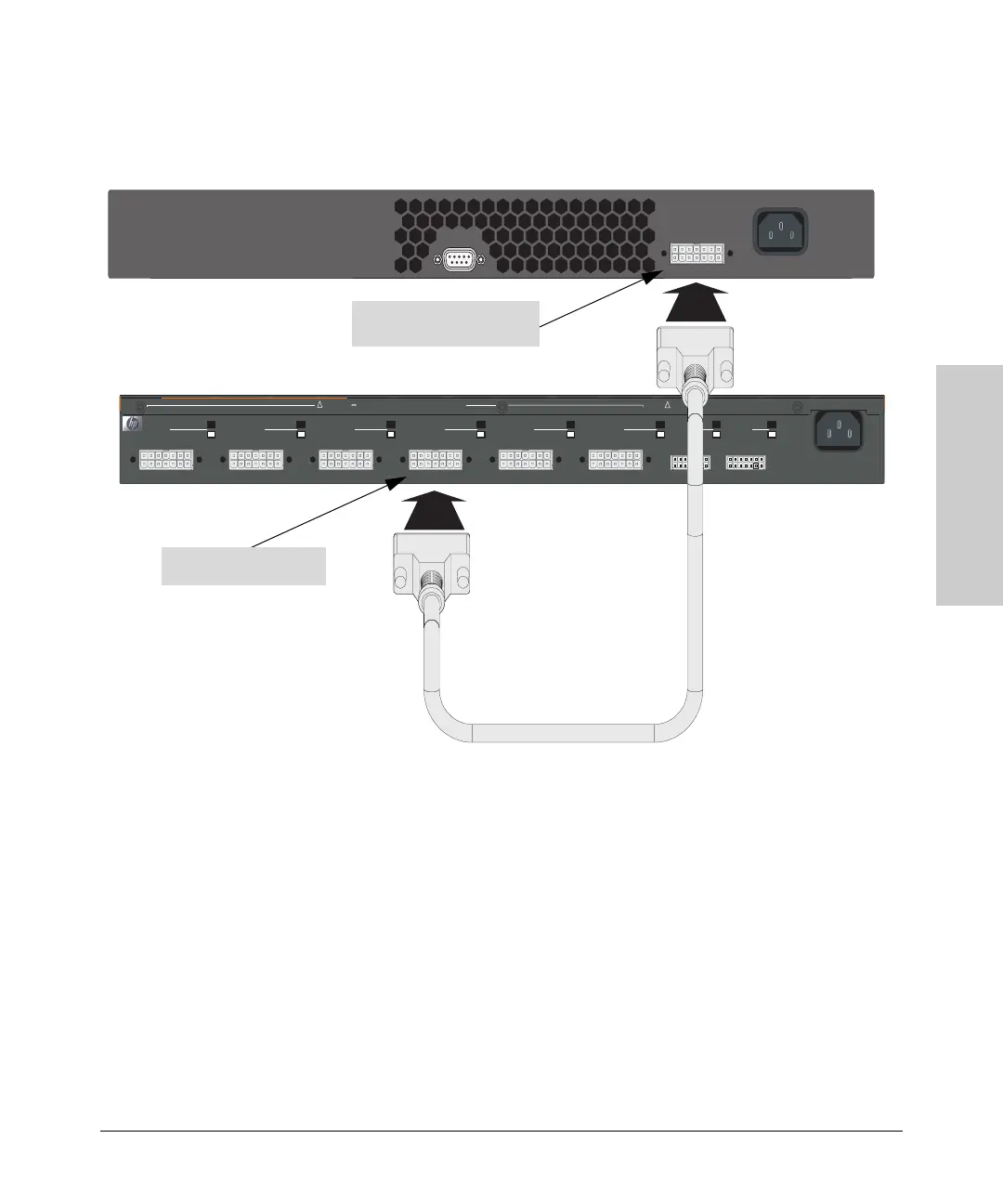